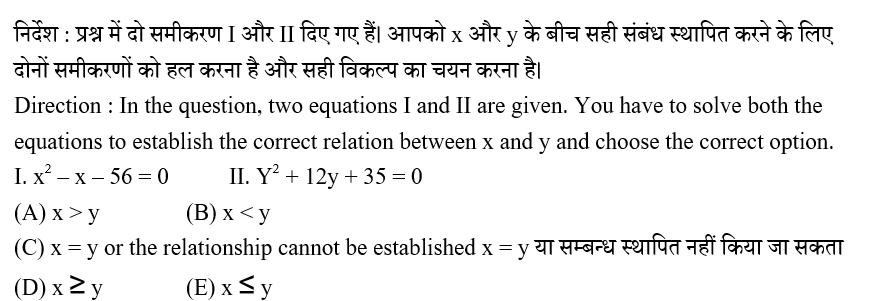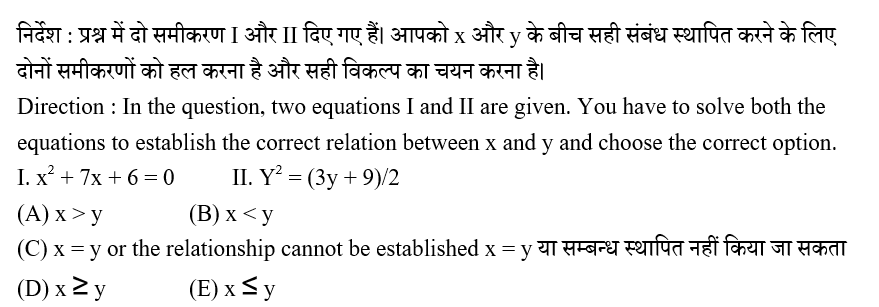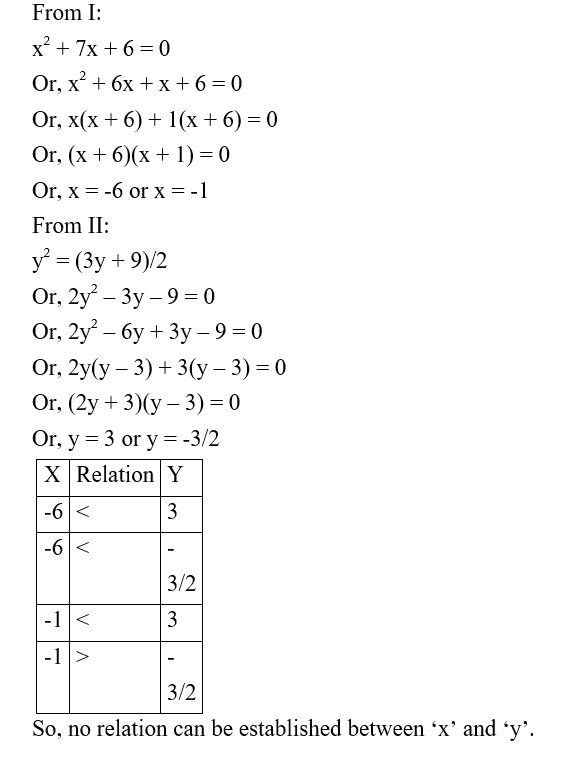Question 1:
निर्देश : निम्नलिखित श्रृंखला में प्रश्नवाचक चिन्ह (?) के स्थान पर क्या आएगा?
Direction : What will come in place of the question mark (?) in the following series?
323, 255, ?, 143, 99, 63
Question 2:
निर्देश : निम्नलिखित श्रृंखला में प्रश्नवाचक चिन्ह (?) के स्थान पर क्या आएगा?
Direction : What will come in place of the question mark (?) in the following series?
22, 24, 36, 66, 122, ?
Question 3:
निर्देश : निम्नलिखित श्रृंखला में प्रश्नवाचक चिन्ह (?) के स्थान पर क्या आएगा?
Direction : What will come in place of the question mark (?) in the following series?
90, 900, 1170, ?, 1290, 1300
Question 4:
निर्देश : निम्नलिखित प्रश्न में प्रश्न चिह्न (?) के स्थान पर क्या अनुमानित मान आएगा? (नोट: आपको सटीक मान की गणना करने की आवश्यकता नहीं है।)
Direction : What approximate value will come in place of the question mark (?) in the following question? (Note: You are not expected to calculate the exact value.)
(199.89 ÷ 9.89) × (399.65 ÷ 19.73) = ?2
Question 5:
निर्देश : निम्नलिखित प्रश्न में प्रश्न चिह्न (?) के स्थान पर क्या अनुमानित मान आएगा? (नोट: आपको सटीक मान की गणना करने की आवश्यकता नहीं है।)
Direction : What approximate value will come in place of the question mark (?) in the following question? (Note: You are not expected to calculate the exact value.)
39.76% of 799.70 + (2699.67 ÷ 14.99) = ? × 24.75
Question 6:
निर्देश : निम्नलिखित प्रश्न में प्रश्न चिह्न (?) के स्थान पर क्या अनुमानित मान आएगा? (नोट: आपको सटीक मान की गणना करने की आवश्यकता नहीं है।)
Direction : What approximate value will come in place of the question mark (?) in the following question? (Note: You are not expected to calculate the exact value.)
(143.05 ÷ 10.99) × (208.12 ÷ 15.89) – 171.01 = ?
Question 7: 
Question 8: 
Question 9: 
Question 10: 






